
The problem: reclaiming control of our eSIM future
At 1oT, our vision was clear: to lead the charge in IoT connectivity. But for a long time, a critical piece of that puzzle – eSIM infrastructure – was out of our hands. We relied on a third-party SIM manufacturer’s platform, and it was holding us back.
The third-party eSIM platform cost us deals. When over the air eSIM profile changes failed, customers blamed us, but we had no visibility into the reasons or the ability to fix issues quickly. Support tickets sat unresolved for days while the vendor investigated. This was more than an operational issue—it became a competitive disadvantage.
eSIM was a potential competitive advantage. By controlling more of the value chain, as with our connectivity management platform, we could improve service quality and innovate faster. So, we decided to build our own infrastructure.
Building an GSMA-certified eSIM infrastructure was a significant challenge for a company of our size. A team of 20 accomplished this, making 1oT the smallest company to reach this milestone.
Guiding principle: admins are people too
My starting point was simple—admins are people too. The UI for this complex infrastructure needed to be as simple and usable as possible for everyone, regardless of their technical or eSIM expertise. Support and sales teams needed to understand what was happening.
There was also an opportunity to license this infrastructure and its UI to other telecoms, as we had done with our connectivity management platform. This required the UI to serve internal needs and stand out as a unique, valuable tool.
The research: identifying user pain points
As a solo contributor, I used a practical approach to understand the problem and shape the opportunity:
- I analyzed the existing third-party UI and documented challenges faced by engineers, technical support, and customer support teams.
- I spoke with telecom partners to gain insight into their workflows, challenges, and ideas for eSIM management.
- I joined eSIM testing and troubleshooting sessions, seeing firsthand the friction between technical teams and customers.
- I researched the competitive landscape and found that competitors built eSIM platforms like physical SIM factories, adding unnecessary complexity.
The competitive edge was clear: radical simplicity. Our perspective was unique as both an infrastructure provider and a connectivity provider. We understood both sides.

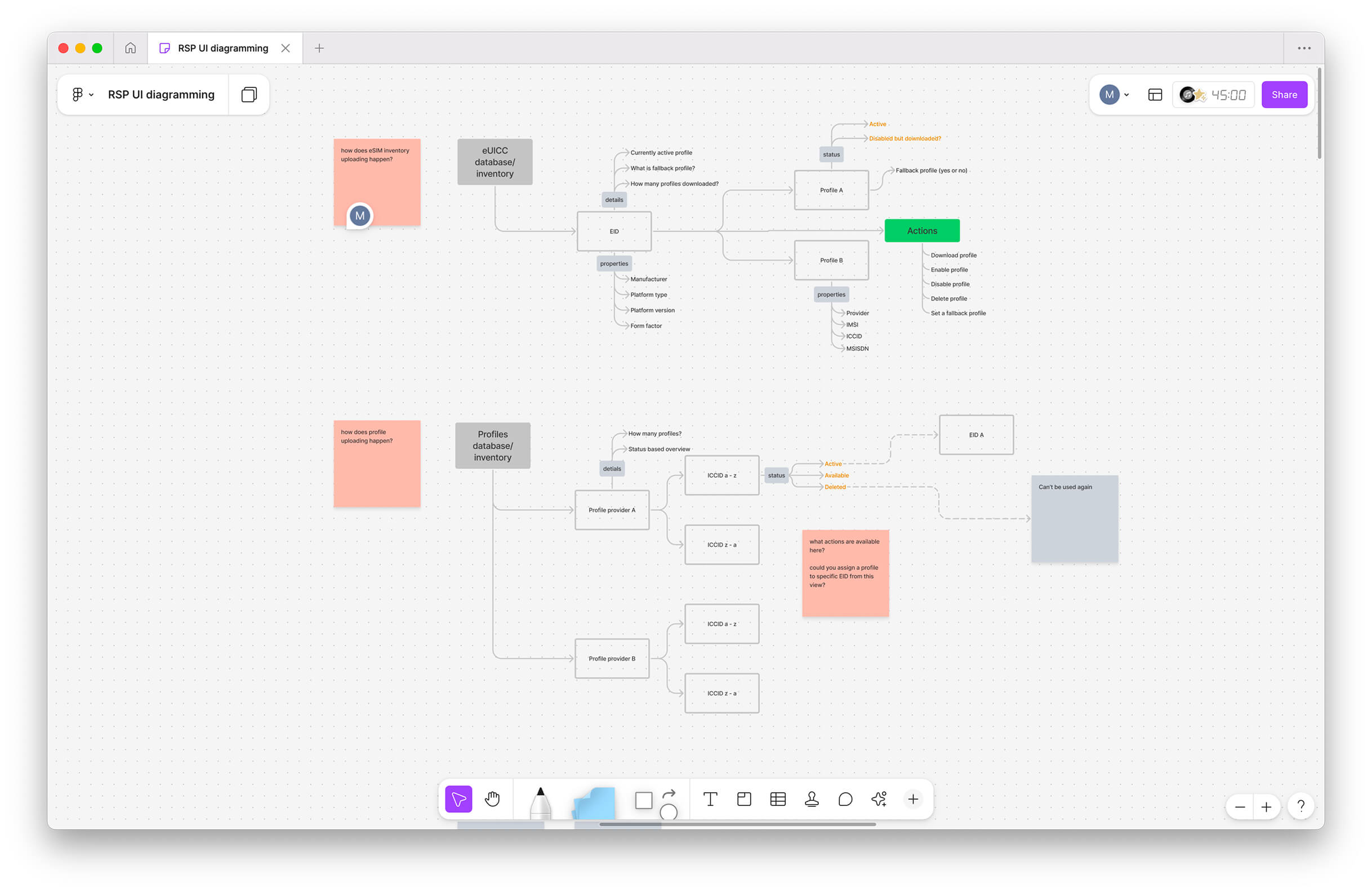
Key frustrations to solve
Research revealed two main obstacles:
- Troubleshooting blind spots: The biggest pain point was the lack of visibility into failed eSIM operations. Competitor platforms didn’t provide clear transaction outcomes or error messages, wasting time and harming customer experience.
- Lack of aggregated overview: Users could not see a comprehensive view of all eSIM cards, telecom profiles, and their states. Management was cumbersome and inefficient.
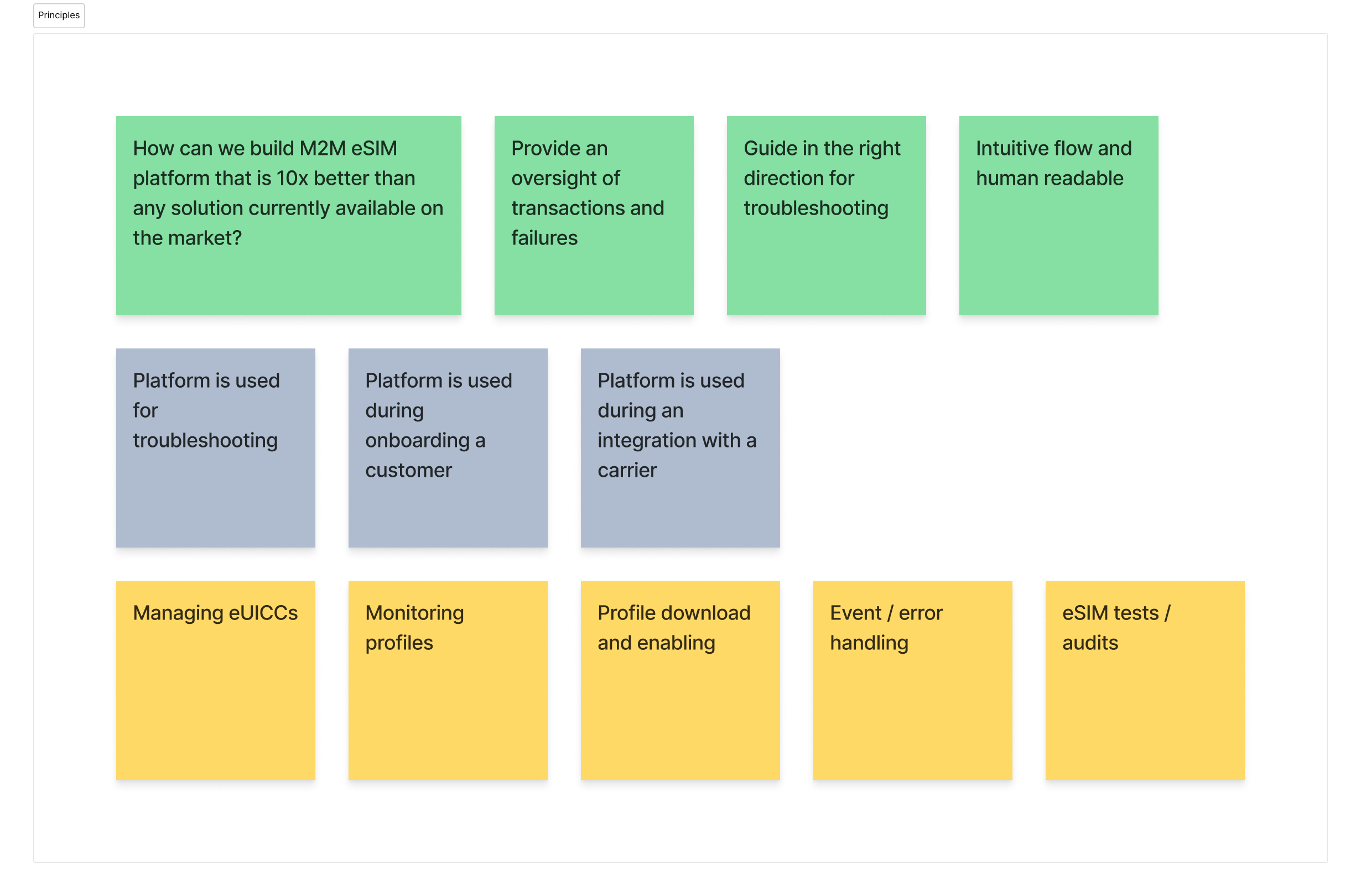
The solution: designing for simplicity and empowerment
Simplicity became our differentiator. We focused on building a UI that addressed core frustrations while laying the groundwork for future differentiation:
- We prioritized clean layouts, minimal navigation paths, and direct calls to action to create an intuitive, user-friendly platform for all technical backgrounds.
- We designed an eSIM transactions page—users see a complete, human-readable log of what happened, where it failed, and why. Anyone can troubleshoot issues without needing an engineer.
- We built an eSIM audit feature that allows quick diagnostic tests on eSIM-enabled devices, providing actionable feedback to support teams and customers.

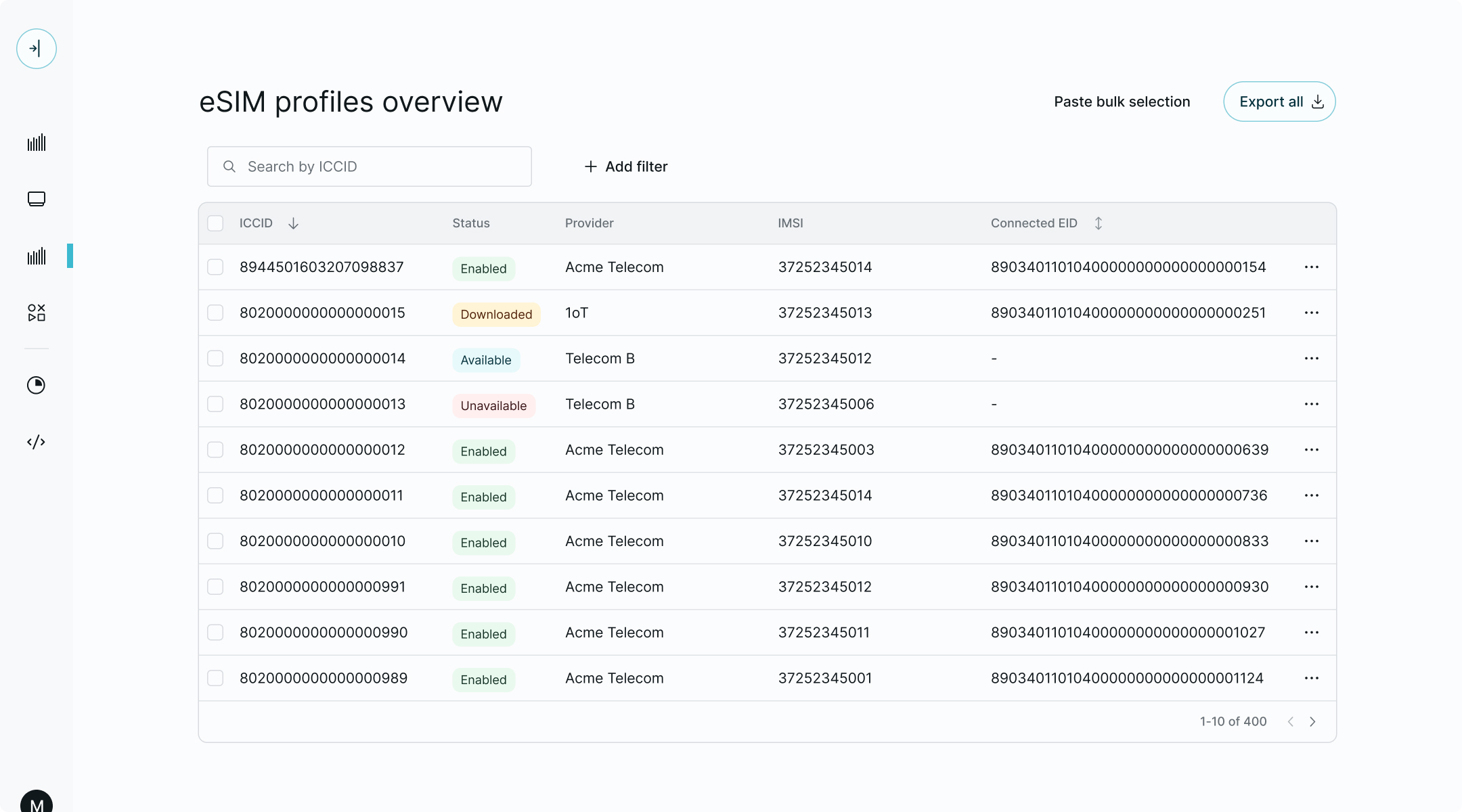
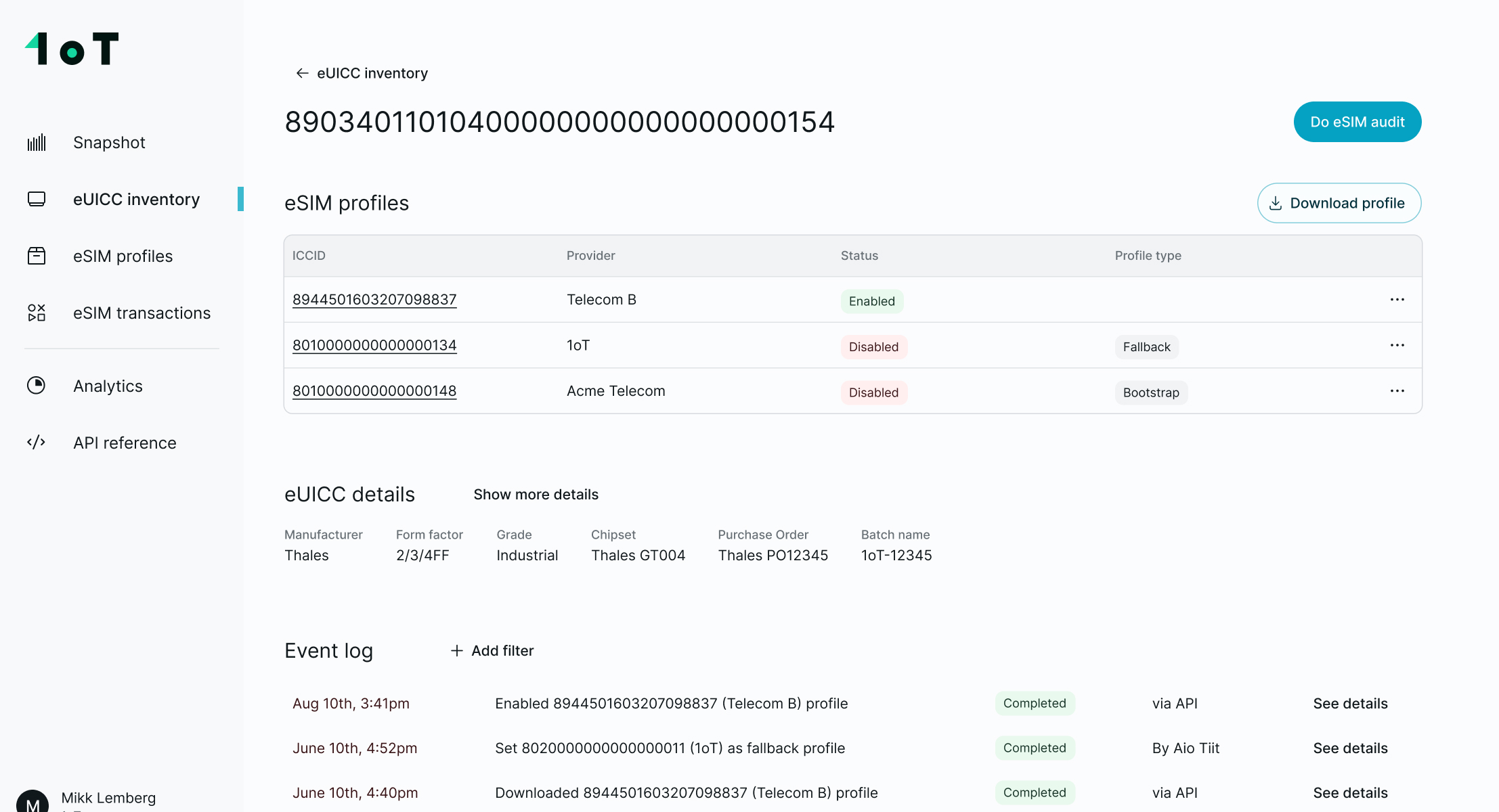
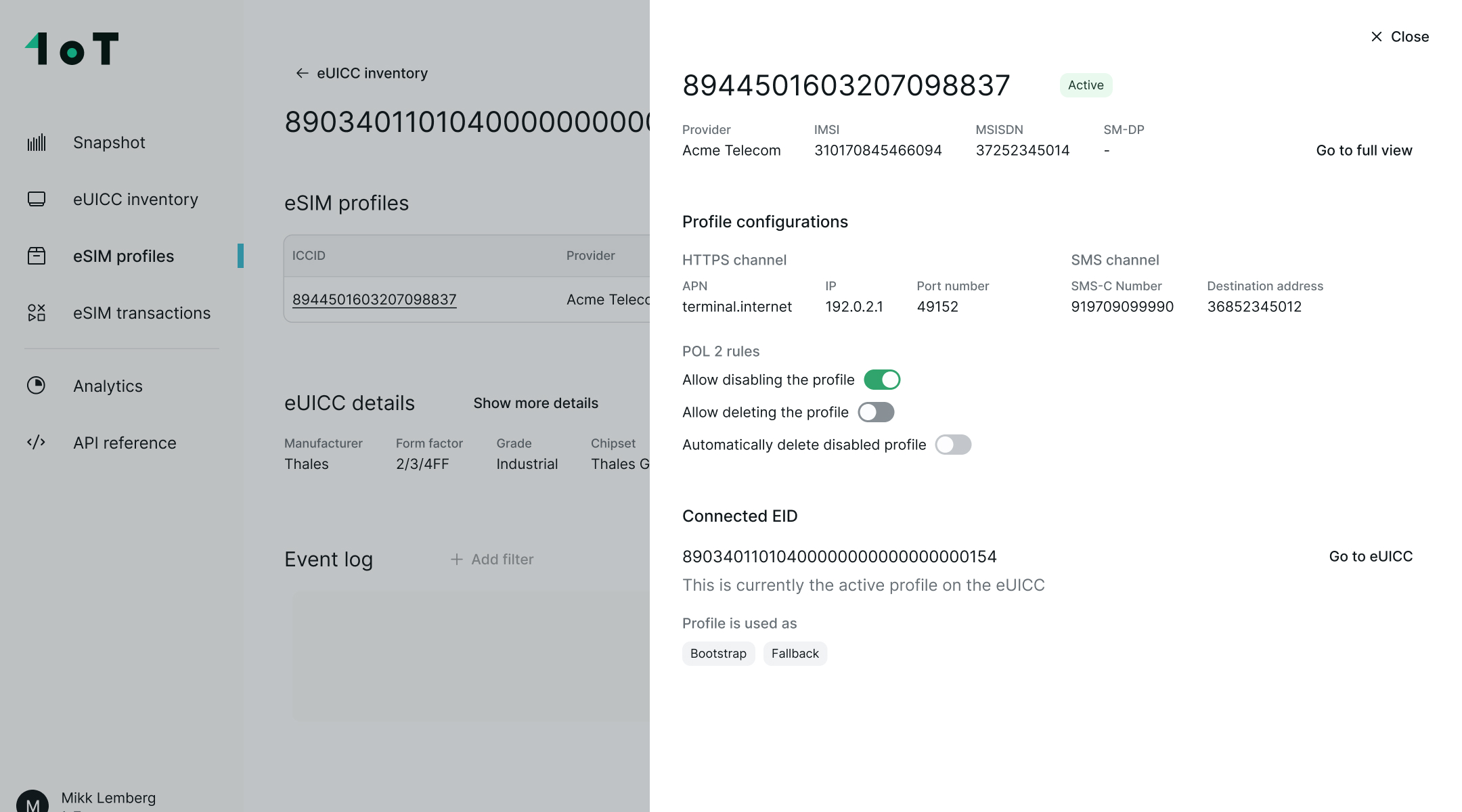
The goal was to present card and profile inventory clearly and concisely, making complex data approachable. The UI consumed the same simple REST API that became a key differentiator for licensing, even before the external API launched. This approach ensured the platform was developer-friendly from the start.
- See how interface help manage eSIM. Launch the interactive demo ↗.
The impact: control, clarity, and confidence
The impact of the m2m eSIM UI was immediate:
- The team became more efficient, with tasks previously needing engineering intervention now handled through the UI.
- More people across 1oT could understand and troubleshoot eSIM issues without relying solely on engineers. Customer support improved.
- Feedback highlighted the findability of information, ease of use, and the modern, intuitive feel of the tool.
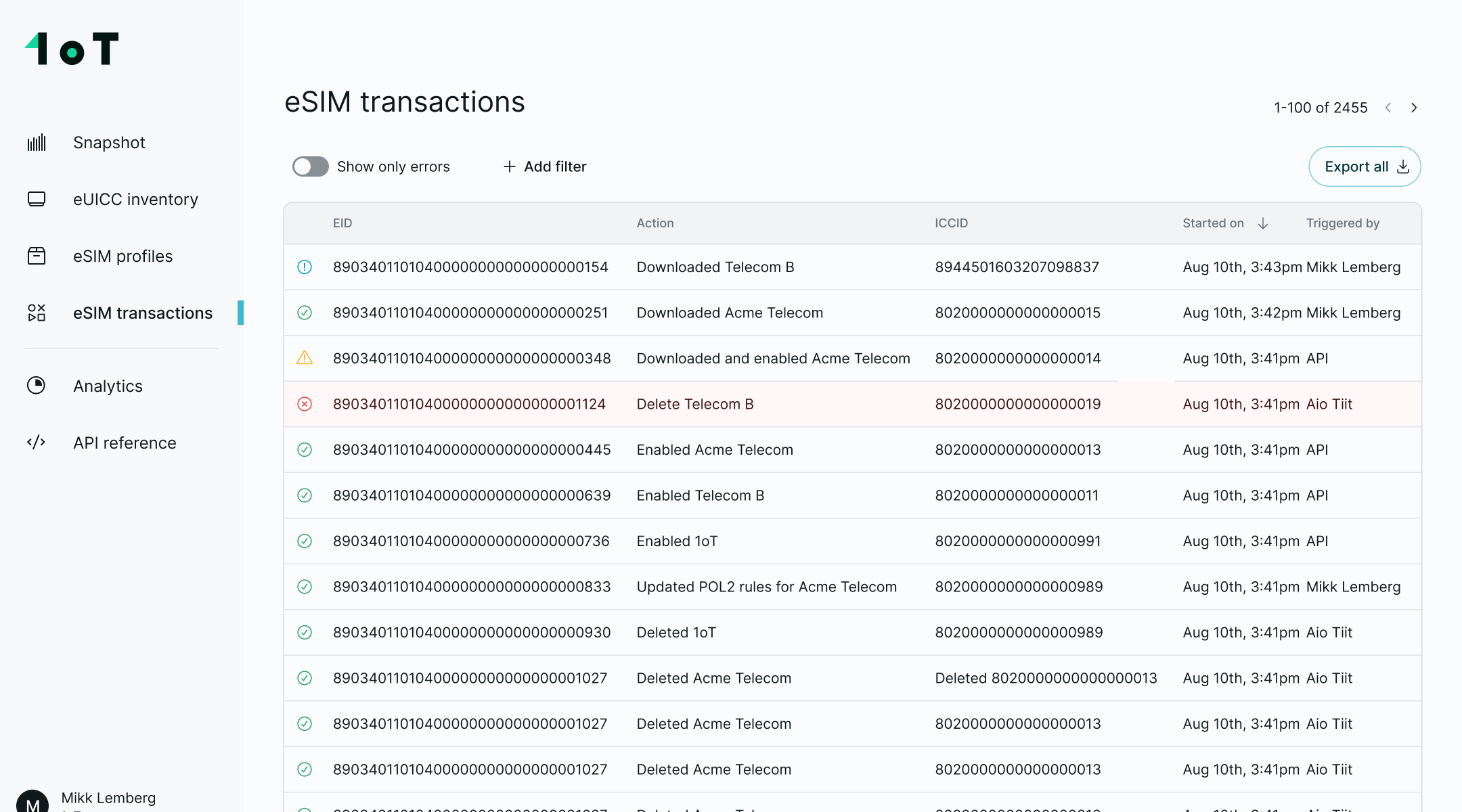
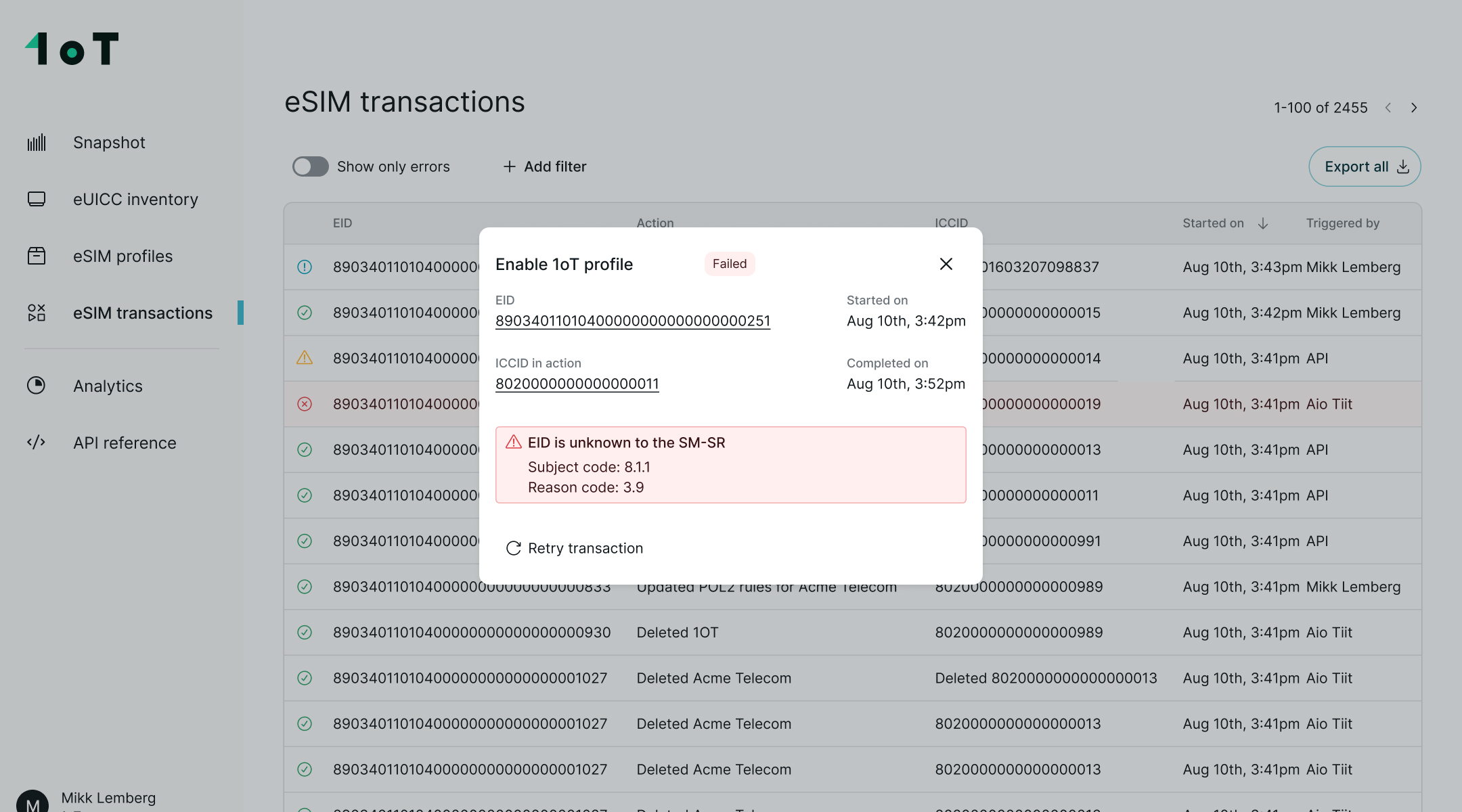
The successful launch created a solid foundation for introducing features like the full API and advanced analytics in future phases.
Reflection: lessons learned in a changing market
Building this product from the ground up taught me several important lessons:
- Start with user pain, not technical specs. Even in technical industries, the biggest opportunities come from understanding daily frustrations—not feature gaps.
- Competitive insights drive positioning. Discovering the “SIM manufacturing mentality” did not just inform the UI—it shaped how 1oT positioned itself in the market.
- Navigating enterprise sales requires a deep understanding of buyers and users, and the ability to articulate value across stakeholders.
- Building from scratch provided a rare chance to implement a scalable design system, watch it come to life in code, and learn from its performance in production.
Although the project did not meet all of its initial licensing goals due to market shifts, it proved to be a strong investment for 1oT in service quality and new business opportunities. The project reinforced the value of user-centered design, even in technical areas.
Additional resources:
- Official announcement: Read the eSIM Core announcement ↗.
- My scripted and art directed launch video: Watch the 1oT eSIM Core launch video ↗.